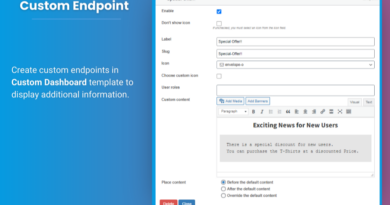How to Fly an RC Plane
Flying an RC (radio-controlled) plane is one of the most exciting and rewarding hobbies you can pick up. Whether you’re drawn to the thrill of aviation or the art of piloting miniature aircraft, learning how to fly is a step-by-step process. For beginners, selecting the right plane and understanding the basics of flight are essential. In this guide, I’ll share my expert advice on flying remote control aircraft for beginners, with a special focus on Dynam aircraft, renowned for their quality, ease of use, and affordability.
I’ll also highlight my personal experience flying the Dynam Primo RC Beginner Trainer Yellow STOL Bigfoot 4S 1450mm with Flaps, a fantastic model for beginners that combines ease of flight with the versatility of Short Takeoff and Landing (STOL) capabilities. Let’s dive into how to get started with flying your very own Dynam RC plane.

Why Choose Dynam Planes for Beginners?
Dynam is a popular and trusted brand in the RC aviation world, especially for beginners. The company produces a wide range of aircraft, from trainers to scale models, each designed with stability and ease of control in mind. When choosing a model, Dynam planes stand out due to their excellent build quality, affordable price points, and beginner-friendly features.
Key Benefits of Flying a Dynam Plane:
- User-Friendly: Dynam planes are designed with beginners in mind, offering easy-to-handle controls and stable flight characteristics.
- Durability: Made from tough foam and lightweight materials, Dynam planes can withstand the occasional crash, making them ideal for new pilots.
- Affordable: Compared to other brands, Dynam offers high-quality planes at competitive prices, which is perfect for those just starting out in the hobby.
- Wide Selection: Dynam offers planes for all types of flying, from basic trainers to scale warbirds, so you can grow in the hobby as your skills improve.
Step 1: Choose the Right Plane for Beginners
Selecting the right RC plane is essential to your success as a beginner. If you’re new to the hobby, it’s best to start with a trainer model. These planes are designed for stability, making it easier for you to learn the basic controls.
One of the standout beginner planes from Dynam is the Dynam Primo RC Beginner Trainer Yellow STOL Bigfoot 4S 1450mm with Flaps. This plane offers great versatility and ease of flight, thanks to its Short Takeoff and Landing (STOL) capabilities, flaps for added control, and a large wingspan for stability. With a 1450mm wingspan, the Dynam Primo is large enough to be stable but still nimble enough for beginners to handle.
Features of the Dynam Primo RC Trainer:
- STOL Capability: The Bigfoot design allows for short takeoffs and landings, making it perfect for smaller fields and beginner pilots.
- Flaps for Better Control: Flaps help reduce the aircraft’s stall speed, providing smooth landings and better control during low-speed flight.
- 4S Battery: The 4S LiPo battery provides a good balance of power and flight time, giving you around 10-15 minutes of flying time per charge.
- Stable Flight: With its large wingspan and stable flight characteristics, the Primo is forgiving, making it easier for beginners to recover from minor mistakes.
Step 2: Understand the Basic Controls
Before you take off, it’s important to familiarize yourself with the basic controls of an RC plane. While there are different types of radios and setups, most RC planes follow a standard control layout:
- Throttle: Controls the plane’s speed (usually the right stick, pushed forward to accelerate and pulled back to decelerate).
- Ailerons (Roll): Controls the plane’s roll, making it bank left or right (on the right stick).
- Elevator (Pitch): Controls the plane’s pitch, making it go up or down (on the left stick).
- Rudder (Yaw): Helps turn the plane without banking (on the left stick, left or right).
For a beginner, these basic controls are key to maintaining smooth, controlled flight. A model like the Dynam Primo features an easy-to-use radio system, allowing you to practice these controls with minimal confusion.
Control Table for Beginners:
| Control | Function | Stick Movement |
|---|---|---|
| Throttle | Controls speed | Right stick, forward/back |
| Ailerons | Controls roll (turns the plane) | Right stick, left/right |
| Elevator | Controls pitch (up/down movement) | Left stick, up/down |
| Rudder | Controls yaw (turns without banking) | Left stick, left/right |
With these controls in mind, you’re ready to begin practicing basic maneuvers and flight techniques.
Step 3: Pre-Flight Checklist
Before you take off, ensure your plane is ready for flight. A pre-flight checklist is crucial to avoid mishaps. Here’s a simple guide:
- Battery Check: Ensure the battery is fully charged and properly installed. A good charge will ensure a longer and smoother flight.
- Inspect the Plane: Check the wings, tail, propeller, and control surfaces (ailerons, elevator, rudder) for any signs of damage.
- Control Test: Move all sticks on your transmitter to ensure the plane responds correctly. You can also check the trims to make sure the plane flies straight.
- Choose a Safe Location: Find a flat, open area away from obstacles and other people to fly. A large field is ideal for beginners.
Step 4: Takeoff and Basic Flight Maneuvers
When you’re ready for your first flight, takeoff and basic maneuvering are the next steps. Here’s a step-by-step guide:
Takeoff:
- Throttle Up: Slowly increase the throttle. Your plane should begin to roll down the runway and gradually lift off.
- Maintain Level Flight: Once airborne, level out the plane by adjusting the throttle and using the elevator to maintain altitude.
- Practice Turns: Make gentle turns by moving the aileron stick left or right. If you feel the plane banking too much, pull back gently on the elevator to keep the wings level.
- Practice Loops: Once comfortable, you can try flying in a circular pattern to practice keeping the plane steady and in control.
Landing:
Landing can be tricky for beginners, but with practice, you’ll master the technique. Here’s a simple way to approach a landing:
- Reduce Throttle: Gradually decrease the throttle to slow the plane down.
- Use the Elevator: Gently pull back on the elevator stick to maintain a slight upward pitch as you descend.
- Flaps Down: If your plane has flaps, lower them to increase drag and slow the plane further.
- Touchdown: Approach the ground slowly, keeping the plane level. Aim for a smooth landing with a slight flair at the last moment.
Pro Tip:
When I first flew the Dynam Primo RC Beginner Trainer, I found that practicing in an open field made all the difference. The plane’s STOL capability made takeoffs and landings easy, even in smaller spaces. I also recommend practicing your landings several times until you get the hang of it.
Step 5: Common Mistakes and How to Avoid Them
Even experienced pilots make mistakes, but beginners often face some common challenges. Here are a few tips on how to avoid them:
- Over-controlling: Beginners tend to make too many quick, jerky movements. Instead, make small adjustments and give the plane time to respond.
- Flying Too Fast: Keeping the throttle too high can make the plane harder to control. Start slow and gradually increase speed as you become more confident.
- Not Trimming Properly: Trim your controls before flying to avoid drifting. Use the trim buttons on your transmitter to make the plane fly straight without constant input.
Frequently Asked Questions (FAQ)
How long will my battery last?
For beginner planes like the Dynam Primo, you can expect around 10-15 minutes of flight time with a fully charged 4S LiPo battery. Always keep spare batteries on hand for extended flying sessions.
Do I need a special license to fly an RC plane?
No, you do not need a license to fly an RC plane. However, you should check local regulations to ensure you are flying in legal areas and at the appropriate heights. Many areas also have specific rules for flying near airports or populated areas.
Can I fly an RC plane indoors?
RC planes are best flown outdoors due to the size and maneuverability required. Indoor flying can be limited unless you’re using smaller models or flying in large spaces like gyms or warehouses.
My Personal Experience with the Dynam Primo RC Trainer
As an RC enthusiast, I’ve flown many models, but the Dynam Primo RC Beginner Trainer Yellow STOL Bigfoot remains one of my favorites. The STOL capability made it incredibly forgiving during takeoffs and landings. I remember my first flight with it—on a calm day at a local field. The plane took off with ease, and I was able to focus on mastering the basic controls. The flaps made slow, controlled landings a breeze, and the 4S battery provided plenty of flight time without sacrificing power.
Conclusion: Start Your Journey with Dynam Planes
Learning to fly an RC plane is an exciting journey, and starting with a reliable, user-friendly plane like those from Dynam will make the process much smoother.




